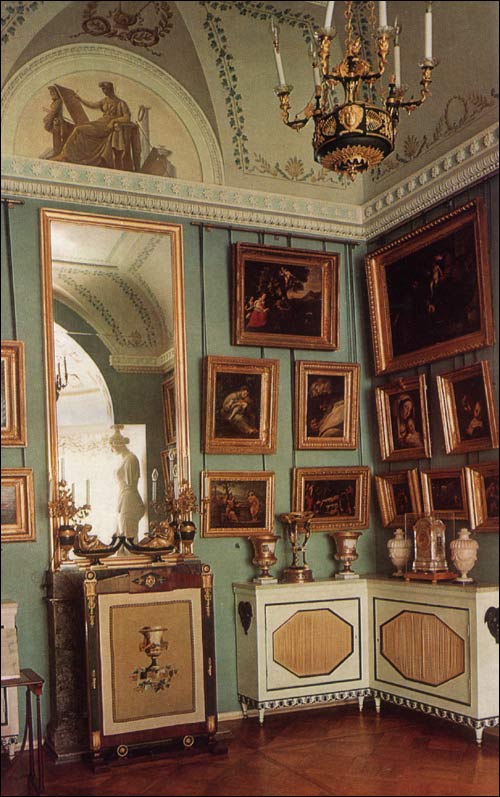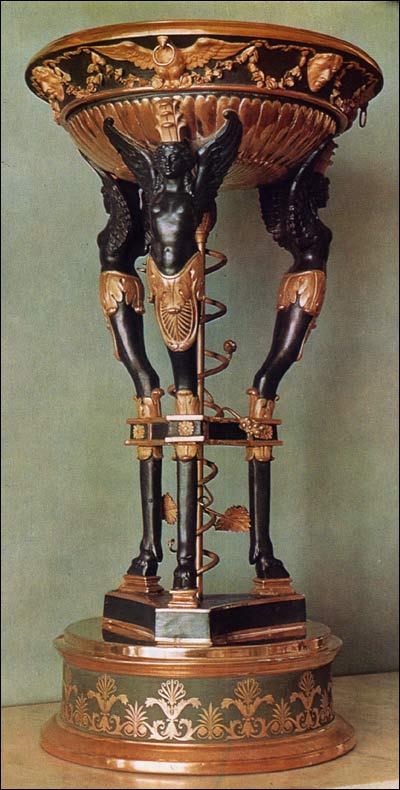Olson Defendorf Custom Homes wins prestigious design award from Houzz.

|


The Little Lantern, one of Voronikhin's best works, is a gem of Russian early nineteenth-century interior decoration. It was created in 1807, in place of a small room that had served as a private library, - a function retained by the newly constructed apartment. Voronikhin replaced the outer wall with a bow-window looking out onto the park, with a coffered semi-dome supported. by four Ionic columns faced with white stucco. Large windows fill in the spaces between the columns, linking the interior with the Private Garden, and creating a sense of unity with nature. The link with the outdoors is further strengthened by the growing flowers in flower stands, which seem to continue the parterre of the garden. Seen against the landscape, the arch stands out in bold silhouette, supported by two graceful caryatids in antique robes, the work of Vasily Demuth-Malinovsky. It emphasizes the contrast between the even luminosity of the bow-window and the darker, shady interior. This effect of contrast is enhanced by the white book cabinets and the black and gold colours of the painted furniture. The dignity of forms and the harmonious combination of the architectural decor and the furnishings give the interior a classical beauty, creating at the same time a mood of comfort and privacy.
Pictures form an important element of the decor. Their choice is characteristic of the palace collections of those days. Most of the canvases are by seventeenth or eighteenth-century Italian painters of the academic school, such as Guido Reni, Carlo Do1ci, Francesco Albani, Francesco Parmigianino and others. There are some works by prominent French painters of the same period, as, for instance, Charles Lebrun, Pierre Mignard, Sebastien Bourdon, and also by Jose Ribera, the celebrated Spaniard. Displayed on the low book cabinets are vases modelled from the drawings of Voronikhin. Those of green Kalkan jasper come from the Peterhof Stone Works, while the porcelain Atheniennes painted the colour of patinated bronze, with chased ormolu decorations, are the work of the St Petersburg Imperial Porcelain Factory. The bureaux and writing-tables by David Roentgen, and the smaller tables with tops of bronze, coloured glass and crystal, are provided with writing implements, soufflet cases for letters, with a lock and covers joined by flexible leather sides, boxes and other objects, mostly gifts, characteristic of early nineteenth-century interiors.     |

|





